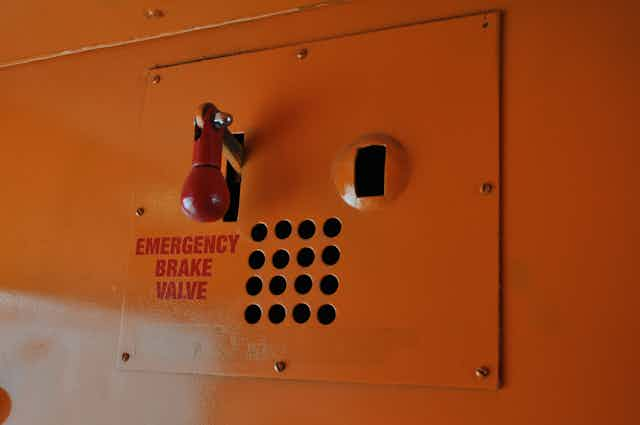Negotiations about the UK’s place in the European Union now seem to hinge on one thing: applying an “emergency brake” to stop certain EU migrants claiming in-work benefits when they move to the UK. But what is this mysterious brake and could it really be used?
There are two types of emergency brake procedure in the EU. One relates to common foreign policy and security policy, the other to areas such as cooperation in criminal matters and (relevant to this case) on social security.
The deal currently under negotiation would make it possible for the UK to apply for a temporary exemption from certain pieces of EU legislation. The process of applying an emergency brake on benefits would involve appealing to the European Commission and the European Council for exemption for an agreed period of time.
In reality though, such suspensions are only allowed in relation to asylum of non-EU nationals and to the free movement of goods (that is, restrictions on imports and exports). There is no such thing as an emergency brake for inter-EU immigration or benefits. In essence, the UK and the EU are making this up as they go along.
Origins
The Treaty of Lisbon – signed in 2007 and in force since 2009 – handed the European Union greater power to develop legislation for all member states. The concept of the free movement of people – that is, the right to move to another EU country for the purpose of working – had until then remained unmodified almost since the creation of the European Community. But the treaty allowed for new legislation related to free movement to be more easily passed, without following the normal strict voting procedures.
To counterbalance these looser rules, it was decided that member states would be allowed to ask for specific measures to be subject to stricter voting if they were concerned that the new rules would cause extreme difficulties. To do this they would have to cite “vital and stated reasons of national policy” and appeal for the decision to be subject to more voting at the European Council. The idea is to delay implementation until it is clear that a large number of member states are on board. This is, effectively, the brake.
It’s important to note here that the brake clause was intended for use on new legislation – not on existing rules, as is happening in the UK’s case now. The goal was always to allow a member state to make sure any developing legislation would be widely supported before being approved.

EU regulations on coordinating social security systems (which apply not only to the EU, but also to EEA countries Norway, Iceland and Liechtenstein, as well as Switzerland) state that citizens from all these countries should have equal access to social benefits in every other country in the deal. The UK and Ireland asked the European Court of Justice to exempt them from offering equal access to citizens from EEA countries and Switzerland but their request was denied.
May need oiling
I’ve searched for examples of the emergency brake procedure being applied to challenge social security legislation but have found none. No major reform has been proposed in this area since the Lisbon Treaty came into force, so no-one has ever felt the need to apply one.
So if the UK was going to be allowed to use a brake in this area, the terms would need to be agreed anew. Fresh legislation would be needed and that legislation would have to be applicable to all member states, the EEA and Switzerland.
The real problem, though, is what comes after the brake has been applied. The implementation is likely to be incredibly complex. The only way that the UK could reject applications for benefits from non-UK citizens is by verifying the identity of everyone applying for benefits – including British citizens.
The current deal on the table suggests that EU migrants should be allowed staggered access to benefits over a period four years, which sounds even harder to implement. Then of course there is the question of how and when the UK would revert to the previous system.

